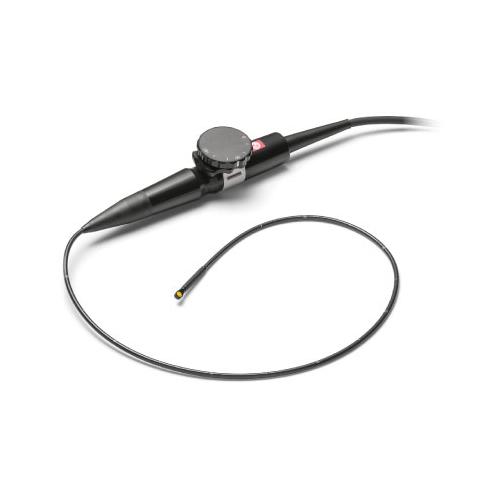The Philips S8-3T is a micro-transesophageal sector array probe, offering an extended frequency range of 8 to 3 MHz. Designed for TEE applications in both adults and children, including infants, this probe provides precise cardiac imaging. With a small diameter of 5.2 mm and an examination length of 85 cm, it is ideal for complex procedures in demanding clinical environments. It supports advanced imaging modes such as pulsed and continuous wave Doppler, and harmonic imaging.
Transesophageal transducer S8-3t - Brand New


Description
Philips S8-3T Probe: High-Precision Solution for Pediatric and Adult TEE Applications
The Philips S8-3T probe represents one of the latest advancements in ultrasound imaging technology for transesophageal echocardiography (TEE). This probe is specifically designed to provide high-quality visualization and maximum flexibility during cardiac exams, both in adults and children, including infants. It is ideal for demanding clinical settings where utmost precision is essential for evaluating cardiac structures.
Equipped with a micro-transesophageal sector array, the S8-3T probe offers an extended frequency range of 8 to 3 MHz, ensuring excellent image resolution for both shallow and deep exams. This frequency range guarantees precise visualization of cardiac structures, even in small or infant patients where fine resolution is critical.
The design of the S8-3T probe includes a tip measuring 7.5 x 5.5 x 18.5 mm, allowing for easy insertion and optimal comfort during the exam. The reduced shaft diameter of just 5.2 mm makes it easier to insert the probe into the esophagus, particularly in clinical settings where space is limited or when delicate procedures are required.
With an examination length of 85 cm, the S8-3T probe is designed for long and complex TEE procedures. This allows clinicians to perform in-depth exams without being limited by the reach of the instrument. Additionally, the S8-3T features a manually rotatable multiplane array from 0 to 180 degrees, providing total control for angular adjustments during the exam. This rotation capability enables better adaptation of the probe angle to examine different areas of interest and maximize coverage of cardiac structures.
Regarding imaging modes, the Philips S8-3T probe offers a wide range of features. It allows for 2D mode imaging to provide real-time detailed views of cardiac structures. It also supports pulsed wave (PW) and continuous wave (CW) Doppler modes, which are essential for assessing blood flow and valve function. The color Doppler mode provides real-time observation of blood flow, while harmonic imaging and XRES improve image quality by reducing artifacts and optimizing tissue contrast.
One of the standout features of this probe is its ability to be used for pediatric TEE applications, including infants, as well as adult patients. It is particularly suited for examining children who require a smaller, more flexible probe while still providing high-quality performance for adults. Additionally, it is compatible with the Philips iE33 system, enabling access to all the advanced features of these platforms for even more precise results.
Features
- Extended frequency range of 8 to 3 MHz: Provides high resolution for both shallow and deep exams.
- Micro-transesophageal sector array: Optimizes beam formation for high-quality imaging.
- 5.2 mm shaft diameter: Allows for easier and more comfortable insertion, even for younger or smaller patients.
- 85 cm adult gastroscope length: Enables long and complex procedures without limitations.
- Manually rotatable multiplane array: Offers flexibility for angle adjustments from 0 to 180 degrees.
- Manual control of anterior and posterior flexion: Allows precise positioning during the exam.
- Advanced imaging modes: 2D, Doppler, XRES, harmonic imaging, and M-mode for clear and detailed visualization.
- Pediatric and adult applications: Suitable for a wide range of patients, including infants.
- Compatibility with Philips iE33: Unlocks advanced capabilities for even more precise diagnostics.
Technical Details
- Technology: Micro-transesophageal sector array
- Frequency Range: 8 - 3 MHz
- Tip: 7.5 x 5.5 x 18.5 mm (width, height, length)
- Shaft diameter: 5.2 mm
- Adult gastroscope length: 85 cm
- Manual rotatable multiplane array: From 0 to 180 degrees
- Manual control of anterior and posterior flexion
- Imaging Modes:
- 2D
- Pulsed wave (PW) Doppler
- Continuous wave (CW) Doppler
- Color Doppler
- XRES
- Harmonic imaging
- M-mode
- Applications: Pediatric and adult TEE applications, including infants
- Compatibility: Compatible with Philips iE33
Compatible Accessories
- Storage case: Protects the probe when not in use.
- Probe holder: Keeps the probe in place during the examination for added comfort.